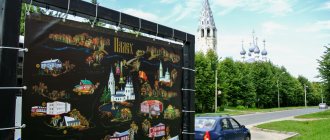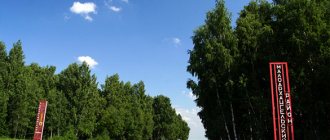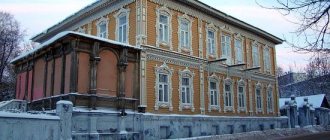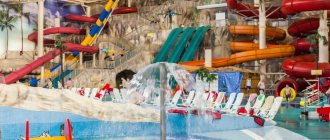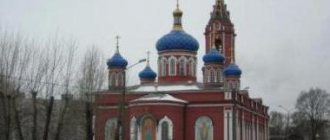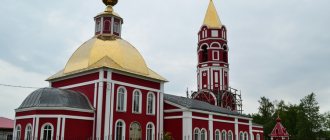Black boxes with fairy-tale scenes are widely known outside of Russia - products from the village of Palekh, located in the Ivanovo region. It is Palekh boxes (caskets, brooches), along with Zhostovo trays and Khokhloma, that go abroad as souvenirs in the luggage of foreign tourists. However, in the village of Palekh there is something to see besides the production of boxes: there are 19 objects that you can visit, including: the Museum of Icons, the House-Museum of I.I. Golikov, Museum of Palekh Art, Holy Cross Church, completely painted by Palekh masters.
Palekh
Palekh is one of the centers of Russian folk crafts, located 350 km from Moscow and 60 km from Ivanovo. The population of Palekh is only 4,800 people (as of 2022). A visit to Palekh can be combined with sightseeing in the Ivanovo region, the city of Ivanovo, Ples, Kineshma.
Palekh is the “main competitor” of Fedoskino near Moscow, since they also paint papier-mâché boxes here. During my next vacation, I managed to visit the village of Palekh on an excursion, which I will tell readers of the site about.
At the beginning of the excursion, we were disembarked from the bus next to a poster showing that in Palekh there are at least 19 objects worthy of tourist attention: But in our program, unfortunately, there was only time for a cursory examination of four of them.
Museum of Icons in Palekh
Our acquaintance with Palekh began with the Museum of Icons. It was a real discovery for me that before the revolution Palekh was one of the centers of icon painting and had nothing to do with the manufacture of boxes. Local icon painters have developed their own original and recognizable style with their own professional secrets.
The museum collection is rich and includes not only Palekh icons, but also those brought over many years from other ancient cities of Russia. There are even wooden sculptures from Old Believer churches.
Palekh Icon Museum
Palekh Icon Museum
Unfortunately, I configured the settings incorrectly and most of the pictures turned out poorly. After all, as it turned out, the most important thing in a Palekh icon is the color scheme.
Palekh Icon Museum
Palekh Icon Museum
Attractions in the surrounding area
Shartomsky Ostrich
Address: Shuisky district, Vvedenye village Coordinates: 56.957867, 41.322221 Phone: Website: https://ivstraus.ru Opening hours: Sat-Sun 12:00-14:00 Cost: 150 rubles. How to get there:
- by bus: from the Ivanovo bus station, flight “Ivanovo - Vvedenye”;
- by car: along the Ivanovo - Shuya road in the direction of the village of Dunilovo, along the way there will be a sign on the left side.
Ostrich farm with 15 ostriches and friendly owners.
The name is associated with the 14th century Nikolo-Shartomsky monastery located in the village.
The farm tour will take about an hour. Photography is permitted on the farm.
You can get a lot of information about ostriches, feed them by hand, buy soap made from ostrich fat, or buy an ostrich egg.
Churches in the village of Vvedenye
Nikolo-Shartomsky Monastery
Coordinates: 56°57′58″ N 41°20′18″ E Address: Shuisky district, Vvedenye village
The monastery is one of the oldest in the country. Founded in the XIII-XIV centuries. According to one version, it was founded by monks who fled from Suzdal from the Tatar invasion; according to another, the monastery was built on the site where, on the banks of the Shartoma River (the ancient name of the Shakhma River), the image of Nicholas the Wonderworker appeared to a young peasant woman.
Until the 16th century, the monastery was rich and influential. Then it gradually lost its meaning. In the 20s of the last century, the monastery was closed and turned into a collective farm warehouse.
Since 1990, the monastery belongs to the church. Now it is actively recovering.
In addition to the monastery, there are two more temple complexes in the village.
The first complex is located in the center of the village near the Shuya road. It was built on the site of the Vvedensky Convent, which was abolished in 1764. First, in 1807, the cold Church of the Presentation was built, money for which was collected by the whole world, in 1845 - the warm Vladimir Church. Both church buildings were typical for wealthy villages of Shuya district.
Another complex is located in the former village of Pupki at the beginning of Severnaya Street. The Churches of the Ascension of the Lord and St. John the Evangelist were built on the site of the wooden church of St. Paraskeva. The state of the temples is abandoned.
Other temples and churches in the village of Vvedenye:
The current Church of the Presentation of the Blessed Virgin Mary into the Temple
Coordinates: 56.965115, 41.330416
The current Church of the Vladimir Icon of the Mother of God
Coordinates: 56.965021, 41.329805
Current Church of the Ascension of the Lord
Coordinates: 56.968751, 41.336966
Inactive Church of St. John the Evangelist
Coordinates: 56.968542, 41.336651
House-Museum of I.I. Golikov in Palekh
Next we proceeded to the house-museum of I.I. Golikova. This is the person who, in the socio-economic conditions that changed after 1917, was able to “reorient” artists to a new type of activity. The changing internal political system threatened to destroy Palekh art. I.I. Golikov and a group of like-minded people founded a decorative and artistic artel. Of course, I had to part with icon painting, but the famous style was able to “take root” on decorative items. In particular, in the house-museum there is a copy of the book “The Tale of Igor’s Campaign,” which was illustrated by I.I. Golikov.
house-museum of I.I.Golikov
The house, which became a museum, was built by the artist himself in 1928 for his family. The conditions of his life and work are recreated here; things that belonged to him are displayed. Also here are documents and photographs illustrating the process of creating a new direction of Palekh art, and a stand has been set up that clearly shows the process of creating a Palekh box.
house-museum of I.I.Golikov
I only took one photo inside the house. Surprisingly, even if you come with a group, you have to pay 150 rubles for photography. They didn’t tell us about this at the Icon Museum. But at the Museum of Palekh Art, which we went to after I.I. Golikov’s house, they even reprimanded me when they saw that I was taking a lot of pictures. True, I didn’t pay anything, but I stopped taking photographs.
house-museum of I.I.Golikov
Familion
Address: st. Bakanova 50, Palekh, Ivanovo region, Russia, 155620 Phone: +7 (49334) 2-10-54 Website: https://www.museum.ru/palekh/defrus.htm Opening hours: Daily from 10.00 to 18.00, except Monday and last Friday of each month.
Attention: by prior arrangement only. Since the first years of the Artel of Ancient Painting's existence, it has preserved the best examples of Palekh products. On May 8, 1934, the Council of People's Commissars of the RSFSR adopted a resolution on the organization of the Museum of Ancient Painting in the village of Palekh
. Its first director (1934-1938) was art historian German Vasilyevich Zhidkov. He organized a museum, began collecting exhibits, set up an exhibition, and conducted lectures and excursions. On March 13, 1935, the museum, called the State Museum of Palekh Art, was opened to visitors. The first exhibition of the museum was an exhibition dedicated to the 10th anniversary of the art of Palekh, which presented 540 exhibits.
The history of Palekh goes back to ancient times. In the 15th century, the village of Palekh was part of the Vladimir-Suzdal lands. According to the Spiritual Testament of Ivan the Terrible in 1572, the village of Palekh was in the local ownership of his son Ivan. In 1616, Palekh was listed as the estate of Vasily Ivanovich Ostrogubov and the widow of Yuri Ivanovich Ostrogubov. Soon it was granted patrimonial ownership to Ivan Buturlin “for the Moscow siege of the prince,” that is, for participation in the war against the Polish-Lithuanian intervention. According to the scribe books of 1628-1630 of the Vladimir district of the Bogolyubsky camp, Palekh is the patrimony of Ivan Buturlin and his children.
In 1693, a wooden church in the name of the Exaltation of the Cross was built and illuminated in Palekh, in 1696 a chapel was consecrated in honor of the icon of the Kazan Mother of God, and in 1742 - in the name of St. Nicholas the Wonderworker. In 1774, at the expense of parishioners, Yegor Dubov built the current stone church of the Exaltation of the Cross. At the end of the 19th century, Palekh was a small village. The population was mainly engaged in icon painting and crafts: wood carving, linen weaving, embroidery, and sheepskin making. On Orthodox holidays, rich fairs were held here.
The exact date of the emergence of Palekh icon painting has not been established by written sources. The style of Palekh icon painting is based on the traditions of the ancient Suzdal school and some features of Moscow icon painting of the 15-16 centuries. The Palekh icon is characterized by soft, smooth lines and a restrained, harmonious color scheme.
One of the earliest examples of the Palekh style is the “Joy of All Who Sorrow” icon from the beginning of the 18th century. Its multi-figure composition is strict and laconic.
The pinnacle of Palekh icon painting is “Akathist to the Savior” from the mid-18th century. The icon design is distinguished by its grace and sophistication. All proportions are elongated shapes. The coloring of the icon is warm, golden brown, using dark greens and cinnabar. The clothes of Christ and the Mother of God are painted in gold. Many works of the late 18th and early 19th centuries are close in style to Akathist to the Savior. Among them are “Akathist to the Mother of God”, “Transfiguration”, “Protection of the Mother of God”.
One of the characteristic features of Palekh icon painting is a complex multi-stamp composition. The icon “St. Nicholas the Wonderworker in the Life and Miracles” of the second half of the 18th century is a vivid example of such a composition.
In the center of the icon board - in the middle - there is an image of the saint. The centerpiece is surrounded by 38 stamps - miniatures telling about the deeds of St. Nicholas the Wonderworker. Many works of Palekh icon painting were created under the influence of Western European art and the Russian academic school. Icons of this style in Palekh were called “Fryazhsky”. One of the first icons of the “Fryazhsky” style is “Don’t cry for me, Mati” by Ilya Balyakin, dating back to 1769. It is made in a broad pictorial manner.
At the turn of the 18th - 19th centuries, delicate, light colors became predominant in Palekh icons. The compositions become more complex, the ornamentation intensifies, and leaf and melted gold is used abundantly. Particularly popular were icons with compositions made on a chased gold background. The halos and fields on them were painted to look like enamel.
Hagiographic, festive, and menaion icons become numerous. The menaion depicted saints and holidays celebrated on each day of the month. Palekh icon painters could depict up to 150 figures on one minaion measuring 9x8. Sometimes several menaia were combined into one composition. In this case, the size of the board increased. These are the icons “Minea with the Resurrection and Passion of the Lord” by M. Zinoviev and V. Markichev and “Minea” of 1850.
Icons were painted in Palekh until 1917, then icon painting traditions were interrupted for a long time. Since the 90s of the twentieth century, Russian religious painting began to revive in Palekh.
The fabulous world of fiction, poetry - the art of miniatures of the new Palekh. Its history as a decorative art begins after the October Revolution, when icon-painting workshops were closed, and artists in search of a livelihood scattered to different parts of the country. Some became painters, others became decorators of club scenes, many turned to agriculture and small crafts: they painted wooden dishes and toys. Most often, the paintings were rough copies of popular prints, peasant spinning wheels, or samples taken from the album “Ornament of All Countries and Peoples.”
In 1923, on the initiative of A.V. Bakushinsky, several experiments in painting wooden products using icon painting traditions were undertaken in Palekh. Boxes and plates on the themes of Russian songs by artists I.V. have been preserved. Markichev, I.M. Bakanova and “The Shepherd” by A.V. Kotukhin. During these same years, in Moscow, in the former icon-painting workshop of the Paleshan A.A. Glazunov, similar searches were carried out. But the master who worked there, the future famous artist I.I. Golikov chose papier-mâché to use the icon-painting technique.
Experiments by I.I. Golikov was supported by the Moscow Handicraft Museum; the first works signed by A.A. Glazunov's works were shown in 1923 at an exhibition of the State Academy of Art Sciences, where they received a 1st degree diploma. Soon, in addition to Golikov, other Palekh icon painters began working with Glazunov - I.P. Vakurov and A.V. Kotukhin. Then Kotukhin went to Palekh, where, from the summer of 1923, the best oldest masters, I.M. Bakanov and I.V. Markichev, were already working on papier-mâché with him.
For display at the All-Russian Agricultural and Industrial Exhibition in 1923, Palekh masters I.M. Bakanov, I.I. Golikov (“Checkers Game”, “Village Party”, “Roosters”), A.V. Kotukhin and I.V. .Markichev completed works ordered by the Handicraft Museum of the All-Union Council of National Economy, for which they also received a 1st degree diploma. In 1924, Palekh artists enjoyed great success at an exhibition in Venice. Success has come. Soon the Palesans received an invitation from Italy to send four craftsmen to organize a school. The artists refused to leave their homeland.
On December 5, 1924, the “Artel of Ancient Painting” was organized in Palekh. Initially, it included seven people: I.I. Golikov, I.M. Bakanov, A.I. Zubkov, I.I. Zubkov, A.V. Kotukhin, V.V. Kotukhin, I.V. Markichev. Soon they were joined by D.N. Butorin, A.I. Vatagin and others. And already in 1925, the works of the Paleshans received recognition at the International Exhibition in Paris.
As of June 1, 1932, there were more than 100 people in the Artel: 48 masters, 20 candidate apprentices.
March 1935 - "Artel" was transformed into the "Association of Artists of Palekh" Chairman until 1938 - A.I. Zubkov.
1940 - “Partnership” is closed.
1943 - restored.
1954 - “Partnership” was transformed into Art and Production Workshops (PHPM). Director - A.G. Bakanov.
1954 - creation of the Palekh branch of the Union of Artists of the RSFSR. Chairman of the Board - G.M. Melnikov.
In 1989, the Palekh art and production workshops were closed.
Currently, creative organizations operate in Palekh:
-JSC “Partnership Palekh”, Chairman of the Board S.I. Kamanin, -Cooperative “Association of Palekh Artists”, Chairman of the Board A.V. Dudorov, -Small Enterprise “Masters of Palekh”, Director M.R. Belousov, -MP.” Traditions of Palekh", - JSC "Palekh", director A.M. Zubkov, - creative workshop of B.N. Kukuliev "Paleshane"
Main excursions:
-History of Palekh art from icon to box -History of Kholuy lacquer miniatures -Tales of A.S. Pushkin in the works of Palekh artists. -Sculptor N.V. Dydykin -History of Palekh icon painting -Life and work of People's Artist of the USSR P.D.Korin -Korin family -Artist N.M.Zinoviev -Palekh: village-academy
Road map:
Related publications
Hotel-Museum "Gogol's Farm"
9 years ago by demonit less than 1 min read No comments
Hotel-museum “Gogol's Farm” is located in the very heart of the village
Pskov State United Historical, Architectural and Art Museum-Reserve
10 years ago by demonit less than 1 min read No comments
The museum in Pskov has been open since 1876. Currently
Memorial Museum-Reserve of N.A. Rimsky-Korsakov
10 years ago by demonit less than 1 min read No comments
The museum-reserve named after the great Russian composer N.A. Rimsky-Korsakov consists of two neighboring
Museum-apartment of M. Jalil in Kazan
10 years ago by demonit less than 1 min read No comments
The apartment museum is located in the house where in 1940-1941. lived Musa
Literary and Memorial Museum of A.M. Gorky in Kazan
10 years ago by demonit less than 1 min read No comments
A.M. Gorky (Peshkov) (1868-1936) - great Russian writer of the late 19th century
(Total, today: 1)
Museum of Palekh Art
The Museum of Palekh Art exhibits those objects that were made by Soviet masters, as well as modern works. And it's not just the boxes. There is furniture, wall hangings, stationery and jewelry. There is a showcase with porcelain products. At one time they tried to use Palekh painting to decorate plates and other porcelain objects, but it did not work.
Museum of Palekh Art
Museum of Palekh Art
The themes for painting the products were epics, Russian folk tales and Pushkin's tales, as well as the life of Soviet people, although I would call the subjects more propaganda than everyday. I couldn’t photograph one wonderful work called “The Pioneers’ Trial of Baba Yaga.”
I liked the box dedicated to the victory in the Great Patriotic War.
palekh
Museum of Palekh Art
Unfortunately, most of the exhibits are not in very good condition: the varnish covering the miniatures is badly cracked. The fact is that Palekh did not have its own varnish. He wasn't needed here. They turned to Fedoskino for a prescription, but they refused to provide it. Several years passed before Palekh created its own signature varnish for products.
Museum of Palekh Art
Museum of Palekh Art
Churches and Temples
Church of the Exaltation of the Cross
Address: st. Lenina, 16 Telephone: Opening hours: Mon-Sun 8:00-16:00
The church was built in 1762-74 in the Byzantine style.
The church on the western wall of the quadrangle has the autograph of the master who built it, laid out in bricks. The master's name was Yegor Dubov. Local artists painted the temple.
In 1903, during the restoration, all the frescoes were rewritten. Biblical scenes taken from engravings by German artists were added to the Palekh style. In 1907, icon painters, Paleshan Belousovs and Nikolai Mikhailovich Safonov, created a new iconostasis in the style of the 18th century.
The temple was saved from destruction thanks to the placement of the ancient painting department of the Palekh Art Museum in it.
Since the early 1990s, the temple has belonged to the Church. One of the revered shrines of the temple is the icon of the Shuya-Smolensk Mother of God, a copy of the prototype.
Since 2012, the temple has the status of the Cathedral of the Exaltation of the Cross in Palekh.
Church of Elijah the Prophet
Address: st. Gorkogo, 6 Opening hours: 08:00-18:00
The cemetery church was built in stone in 1790 instead of the original wooden one. During Soviet times, the church was used as a warehouse. The walls painted by Sofonovo masters were whitewashed.
Worship services resumed in 1989. Thanks to skilled parishioners and the support of benefactors, by 1993 the church was completely restored.
How to distinguish real products from Palekh from fakes at the household level
- Fake Palekh boxes have filled all souvenir shops and markets, so how can you distinguish real products from Palekh from fakes? The museum told us some secrets:
- Most often, products from Palekh are black on the outside (green and blue are very rare), but always red on the inside;
- High quality polishing of both external and internal surfaces. There should be no scratches, stains or blisters;
- The lids of the boxes (caskets and caskets) are tightly fitted to the base - the box;
- Special marks: in the lower left corner look for the signature “palekh” in gold, in the lower right – the author’s surname;
- On the bottom of the box UNDER THE VARNISH we are looking for the Palekh brand name. On fakes this sign is usually glued on top;
- Pay attention to the packaging: upon purchase, the finished product must be packaged in a hard box, the inside of which must be sealed with cotton wool to protect the varnish and the image;
Palekh products are expensive. The box cannot cost 100 rubles, since it is handmade, almost like jewelry.
Palekh boxes
Holy Cross Church
The last object of our excursion was to be the Church of the Exaltation of the Cross, completely painted by Palekh masters. At one time it was declared a museum and this saved it from destruction. But at six o'clock in the evening the temple was closed and we did not get into it.
Holy Cross Church Palekh
Palekh boxes are still considered a good gift. Production is not “dying” despite the fact that the products are quite expensive, and there are many cheap Chinese counterfeits around. There is also a school that trains new masters of lacquer miniatures. By the way, the school of icon painting is also being revived.
We were not given time for souvenirs. Personally, I wasn’t going to buy anything, because I knew the price of the products in advance. But, just looking into the shop, I saw an object that proved that Palekh is not only boxes and that the craftsmen are trying to keep up with the times.
